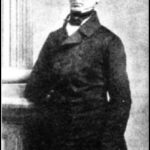When did Beethoven compose The Tempest?
Op. 31 No. 2, otherwise named The Tempest (Der Sturm in German) was written in the year 1802. This year held great significance in Beethoven’s life. The composer was in the depths of despair over his loss of hearing, and had been instructed to spend some time in the countryside by his personal physician. In April he journeyed to the village of Heiligenstadt where he was to spend 6 months taking care of his health.
In October that year, Beethoven wrote what came to be known as the Heiligenstadt Testament, a document in which he expressed his utter dismay concerning his deafness. In the document Beethoven writes that he would have ended his own life, if it wasn’t for his art.
‘…it was only my art that held me back. Ah, it seemed to me impossible to leave the world until I had brought forth all that I felt was within me. So I endured this wretched existence…’
This period in Beethoven’s life represents an important turning point, a new determination to pursue and discover his artistic capabilities and tread what he named the New Path.
1802 became one of his most productive years, in which he composed works such as The Prometheus Variations (also called The Eroica Variations), three piano sonatas including The Tempest (Op. 31) and Symphony No. 2.
Why is Beethoven’s sonata called The Tempest?
Tempest is another word for a storm. In the original German, the sonata is called Der Sturm. There is a popular story as to how it earned this nickname, and it originates with Anton Schindler, Beethoven’s secretary. It is a reference to a brief conversation between himself and Beethoven on how the sonata should be interpreted. Beethoven reportedly told his secretary to read (Shakespeare’s) The Tempest in order to understand the piece.
This is not the only theory, however. We cannot know if this conversation even took place, but if it did, it is possible that Beethoven was referring to a text by the writer C. C. Sturm. There was a book in Beethoven’s possession by Sturm, called ‘Reflections on the Works of God in the Realm of Nature and Providence for Every Day of the Year’, full of annotations by the composer. It was a popular book at the time. It is worth giving thought to the tremendous mental and emotional fortitude that the composer drew upon in order to cope with his devastating illness. We know that his spiritual life was also a true source of strength to Beethoven. A study of his notes in this text may provide an interesting insight into Beethoven’s spirituality.
Purely based on listening, one might say the nickname tempest suits the piece; musicians and scholars alike have described this sonata as stormy, unsettled. The third movement is indeed full of momentum. It is a deeply expressive piece.
You may very well find its hypnotic melody embedding itself in your mind with great ease!
What key is Beethoven’s Tempest written in?
The Tempest is written in D minor, which is a little used key in Beethoven’s repertoire.
Only a handful of pieces by the composer are in this key, including the famous 9th Symphony.
Austrian composer, Carl Czerny, once Beethoven’s pupil, said that the third movement was inspired by a galloping horse outside Beethoven’s flat window. The finale to this sonata certainly echoes the powerful momentum of such a majestic creature.
Beethoven’s greatest achievements from this time onwards reveal the composer’s expertise in uniting passion with clarity. The final movement of The Tempest is dramatic and intense, yet its execution is lucid and controlled.
A.K.





